Premolars
#4, 5, 12, 13, 20, 21, 28, 29

Maxillary 1st Premolar
Maxillary 2nd Premolar
Mandibular 1st Premolar
Mandibular 2nd Premolar
Measurements

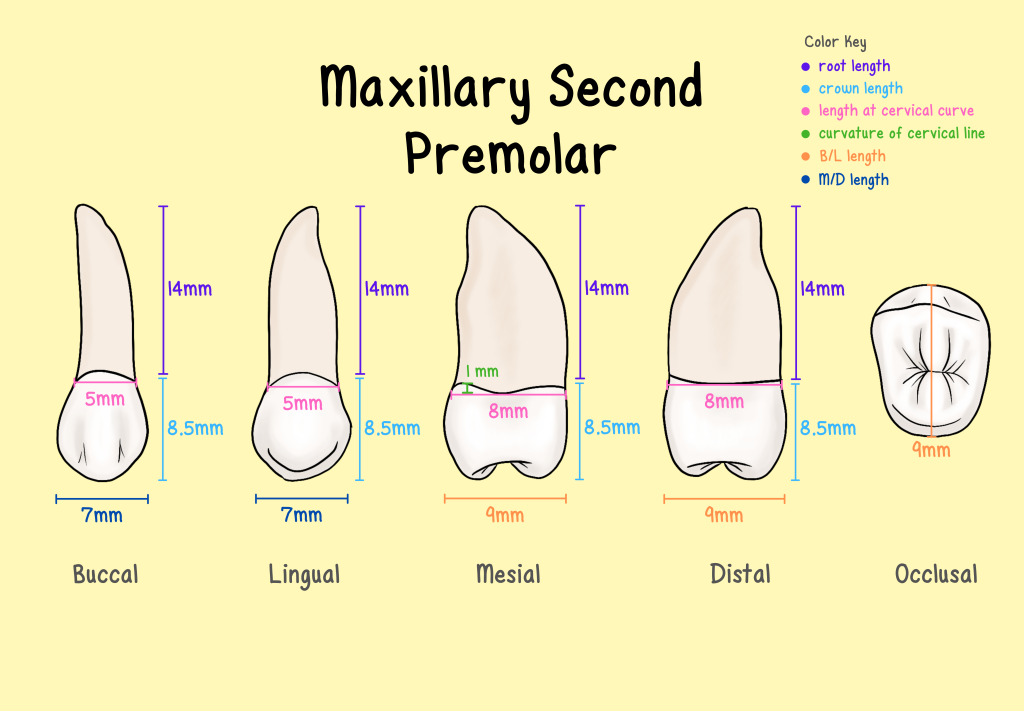
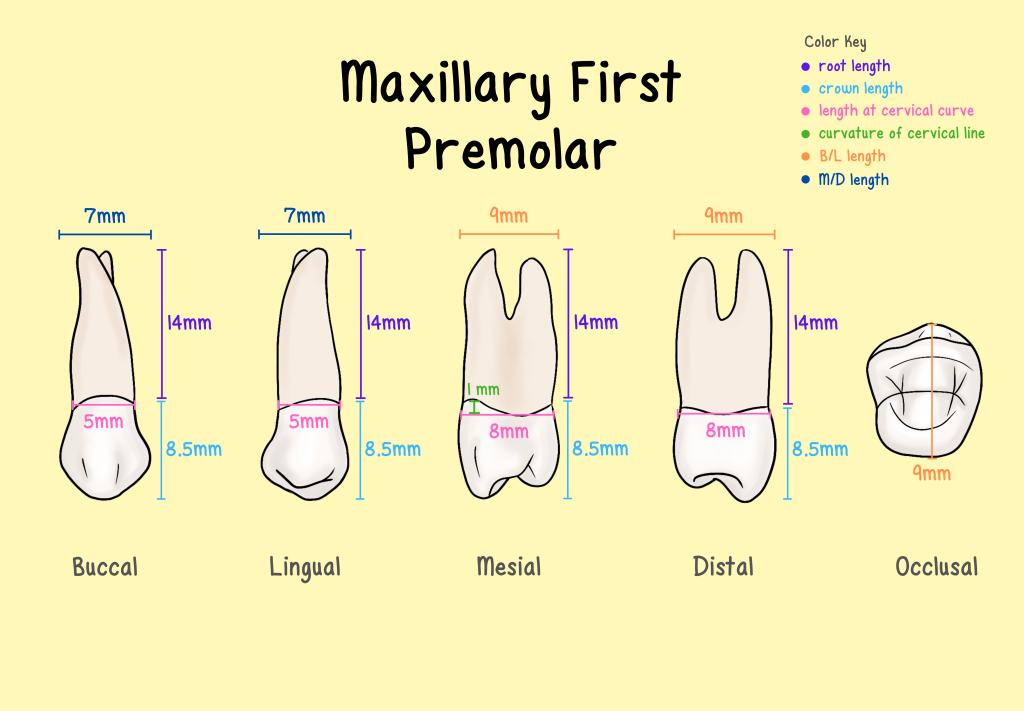
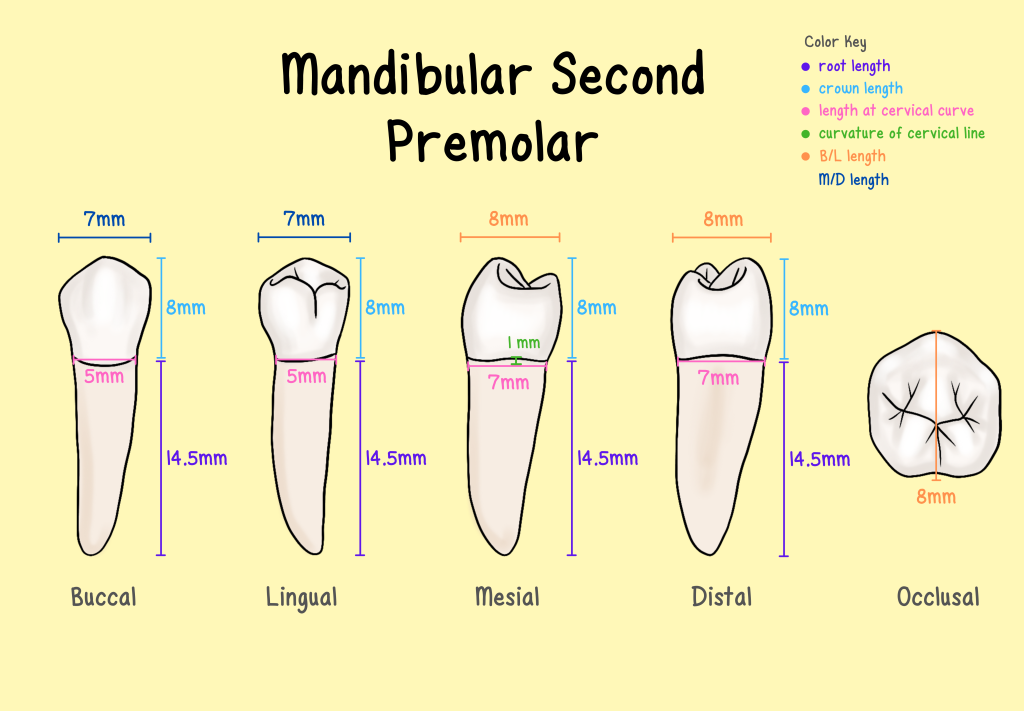
Height of Contour

Root Depressions
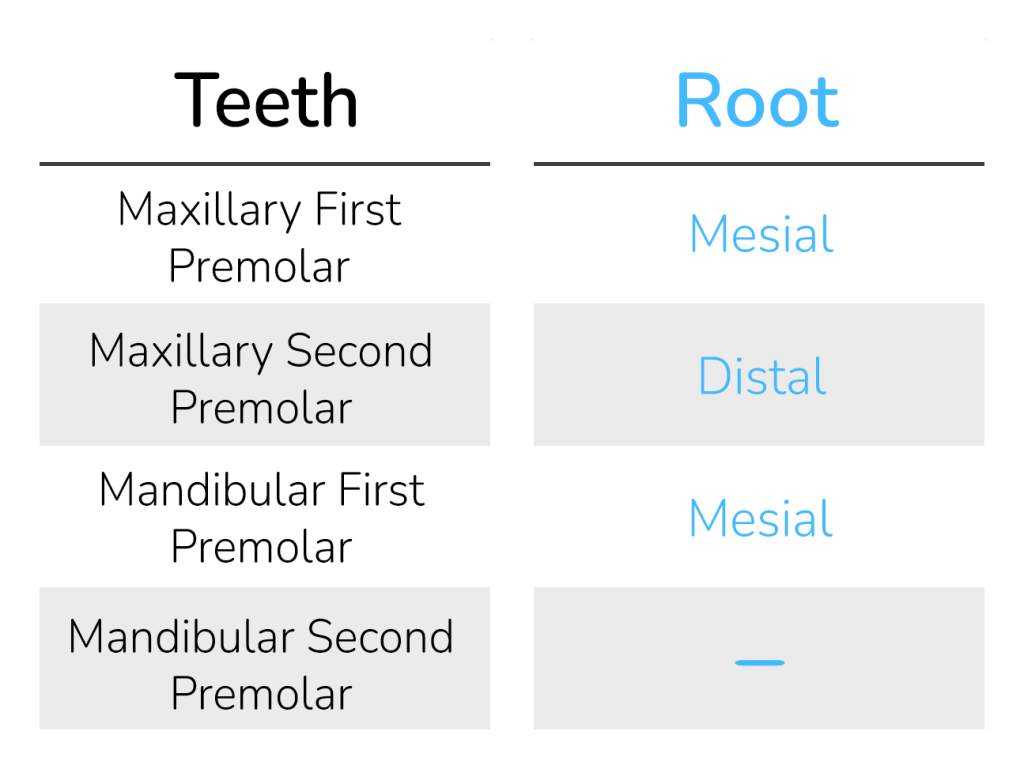
Crown Shapes
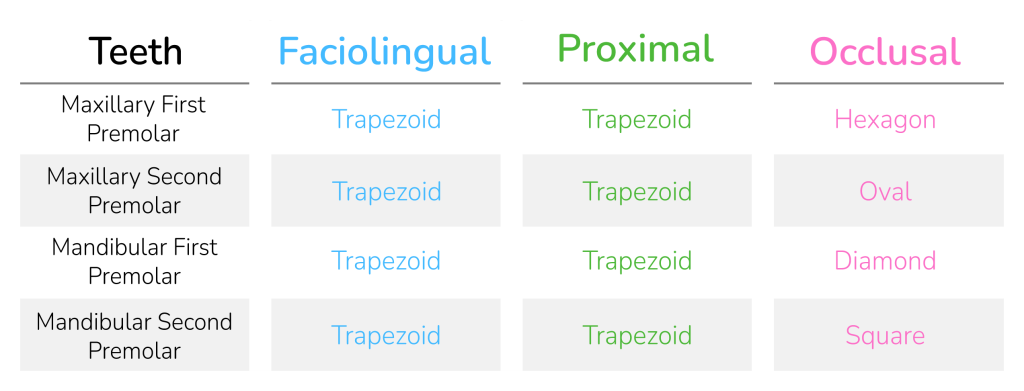
Eruption and Calcification

Quiz
Learn More Anatomy
References
Nelson. (2009). Wheeler’s Dental Anatomy, Physiology and Occlusion (9th ed.). Elsevier.
Scheid, Weiss, G., & Woelfel, J. B. (2012). Woelfel’s dental anatomy (8th ed.). Wolters Kluwer Health/Lippincott Williams & Wilkins.
